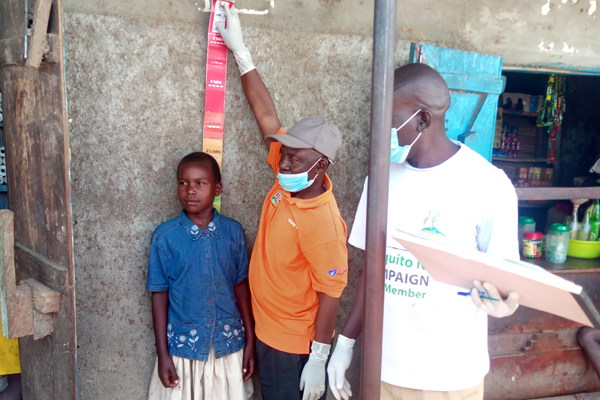Prime
Pakwach residents get Shs600m hospital, hope to end bilharzia

The community members of Pakwach queue for a free bilharzia test at the new health centre that was opened Sunday. PHOTO | PATRICK OKABA
What you need to know:
- The health centre is expected to provide services that would also scale down the high rate of bilharzia pounding the communities.
Pakwach residents on Sunday took to the streets to jubilate as they received a new Shs600 million liver care health centre.
The health centre is expected to provide services that would also scale down the high rate of bilharzia pounding the communities.
The Digestive Liver Disease Center (DILD) is a privately owned health facility that specializes in the treatment of bilharzia because it is one of the silent killer diseases.
According to the statistics from the district health department, at least 5-6 cases of bilharzia are reported daily at Pakwach Health Centre IV. This, the health team says is high because of the consumption of unclean and unsafe water from the River Nile, and poor hygiene
One of the residents of Pakwach town, Ms Joyce Owiny, said the communities are not only faced with challenges of bilharzia but also Hepatitis-B which has continued to kill people.
“We have very many members suffering from bilharzia with swollen stomachs. But they lacked treatment and some have sold off their most valuable assets to foot the medical bills in vain,” she said.
Ms Owiny said bilharzia is common in Pakwach district due to limited access to clean and safe water sources where people end up drinking contaminated water.
“Few people drink boiled water. They think boiling water takes a lot of time and charcoal. But it is important,” he said.
Mr Joseph Okello, a resident of Amor village, said: “Sensitization about bilharzia must be scaled up because some community members are rigid to health issues. I have seen children and adults suffering from bilharzia and this affects the family productivity.”
The Director of DILD, Prof Ponsiano Ocama: “Many people are sick with bilharzia and they cannot travel long distances to seek medical treatment based on their financial problems. We hope this will cut costs of travel and treatments.”
He said an endoscopic machine to diagnose ulcer wounds in the intestines and carry out cancer tests will be installed at the centre.
The magnitude
Pakwach District Neglected Tropical Disease focal person, Mr Noah Okumu, said 7 of every 10 individuals seeking medical attention at different health facilities test positive for bilharzia.
The most affected sub-counties include Dei, Panyimur, Pakwach and Pokwero.
“Infection rate is high because water bodies surround them and people don’t boil the water they drink. For example, the bilharzia prevalence rate in Dei Sub-county is at 56 per cent, Pakwach at 57, Panyimur at 69.6 and Pokwero at 50 per cent. This has become a serious public health threat,” he said.
The district chairperson Mr Robert Omito, said Pakwach Health Center IV is incapacitated to handle the cases of bilharzia which has made people surrender their lives after failing to get treatment.
“50 per cent of the district is the fishing community and people are too poor to treat bilharzia. Some have died and this calls for innovative ideas to save people,” he said.
Ministry of Health estimates reveal that about 18 million people in Uganda are exposed to bilharzia and the infected population stands at 12 million.
Uganda has a high burden of Neglected Tropical Disease (NTDS) that affects mainly the rural poor which results in reduced productivity, hence affecting the development of these populations.




